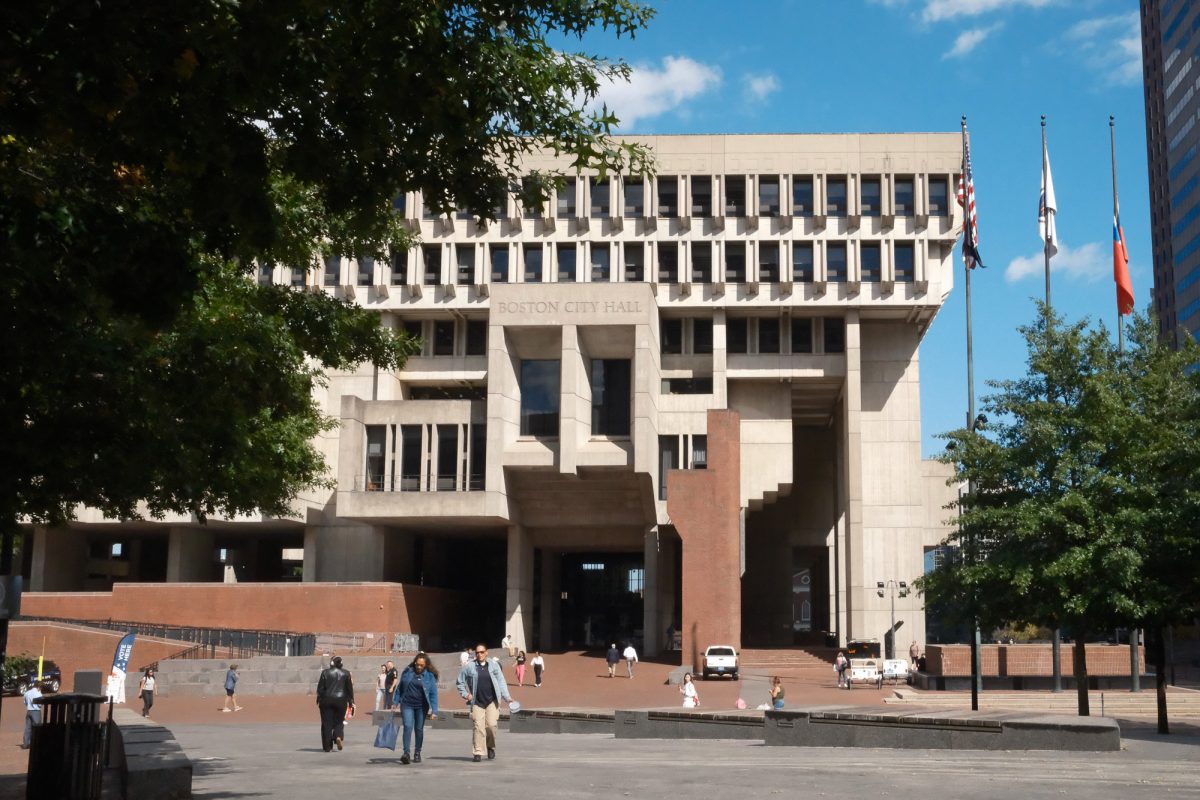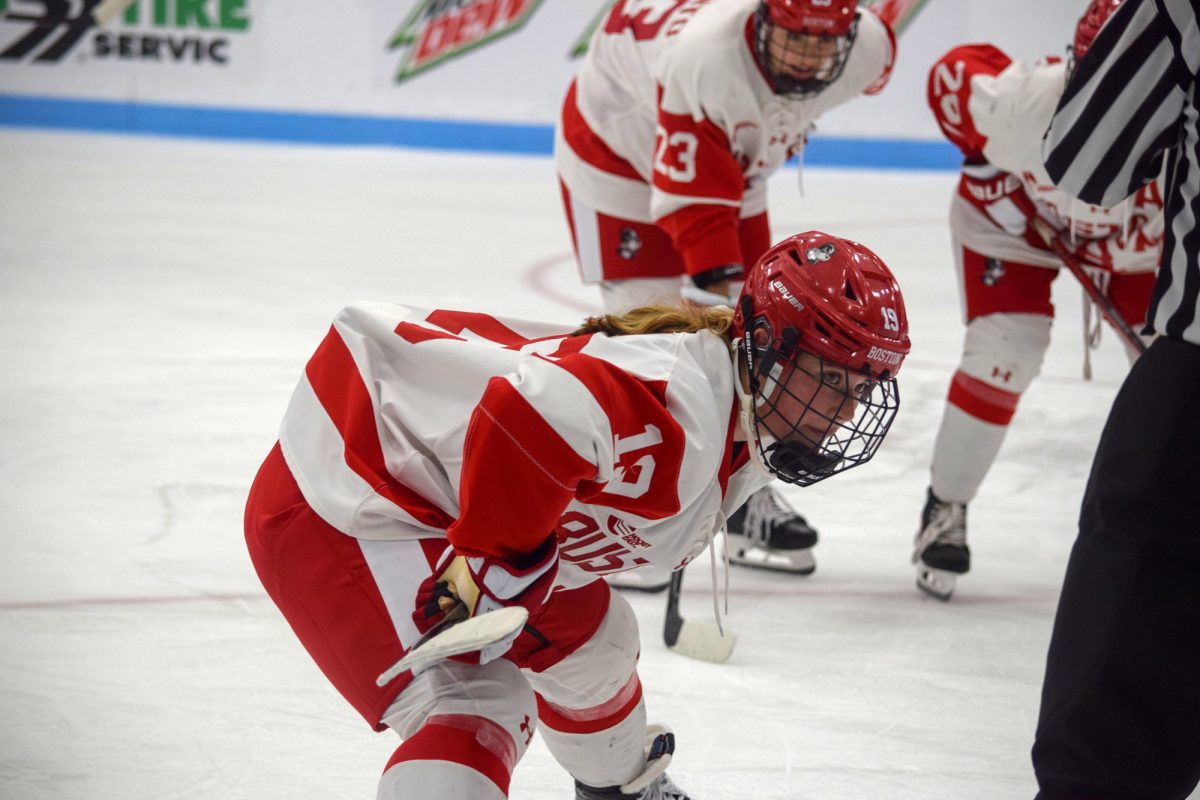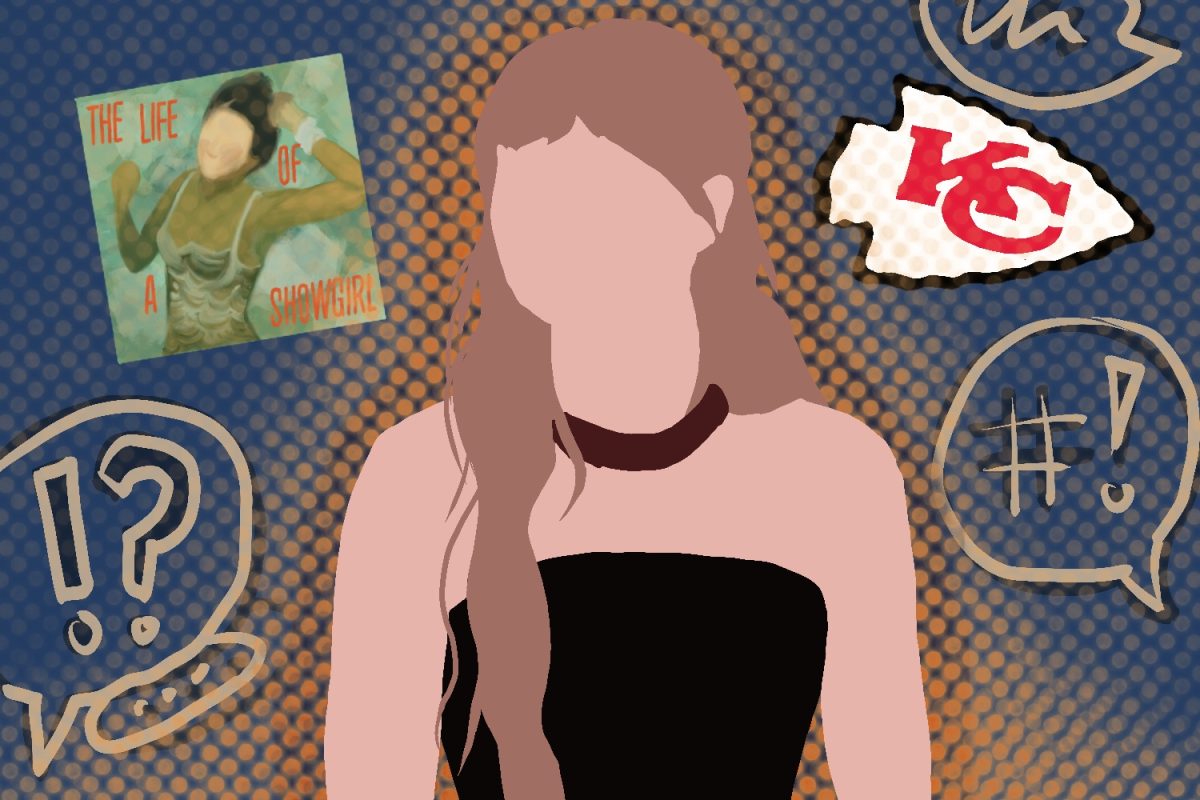A poster of a domestic violence victim stares at passersby from inside the Family Justice Center on Commonwealth Avenue with the words ‘He Loves me . . . Not’ in black block letters surrounding the man’s eye.’
A quick glance will not reveal the most important part of the poster: the eye belongs to a man. Inside the Family Justice Center, a door with domestic violence informational pamphlets posted on it opens into the public office of the Gay Men’s Domestic Violence Project. The nonprofit GMDVP has been supporting victims and survivors of abusive relationships since a gay male survivor started it in 1994.
The GMDVP is one of a small handful of organizations dedicated to serving domestic violence victims in the LGBT community of Massachusetts.’ ‘
Although October is both National Domestic Violence Awareness Month and LGBT History Month, the two observances are rarely linked, GMDVP Director of Education Iain Sutfin-Gill said.
‘Domestic violence is more than just a man beating up a woman,’ Sutfin-Gill, a survivor of domestic violence, said. ‘It is about one person systematically getting power control.’ It can happen to anybody.’
The statistics for straight domestic violence are indistinguishable from LGBT domestic violence, and the latter frequently goes unnoticed. One in four straight women is affected by domestic violence, according to the Centers for Disease Control. One in four gay, bisexual or transgender men is affected by domestic violence, Sutfin-Gill said. One in four lesbian, bisexual or transgender women are affected by domestic violence, Kaitlin Nichols, Director of Education and Outreach for The Network/La Red, said. In reality, all people can be affected, Nichols said.
The Network/La Red serves lesbian, bisexual and transgender women in much the same way as GMDVP, helping victims of abuse.’ The two organizations are important resources for the LGBT community in Massachusetts, but there are still large disparities in help for LGBT victims of domestic violence, Nichols said. Only five shelters, besides The Network’s shelters, actively accept people that are LGBT.
‘ ‘Even then, it depends what letters of the alphabet of LGBT that you are,’ Nichols said. ‘For a gay man it is more difficult to find shelter and help.’ All shelters should, but that does not mean they will.’
GMDVP has three beds in a safe home, which is shorter term than a shelter, Sutfin-Gill said. Last year alone, they turned away more than 80 clients because of lack of space.’
Their headquarters is a secret location, but the main room of the office in the Family Justice Center is packed with materials to help survivors.’ A round table is surrounded with chairs for support meetings. Pamphlets with information about GMDVP and The Network/La Red’s 24/7 hotlines and advice on law services are strewn on a side table.
Because the survivors of domestic violence still need the basics of daily life, toilet paper and orange, economy-sized jugs of Tide detergent are kept on hand, GMDVP staff attorney Wayne Thomas explained. Used clothes are packed into gray tubs and onto racks, shoved into the corners as well. When resources are not available for men through other organizations, GMDVP steps in as much as they can.
Someone who is not scared to express their opinion, as evidenced by his New York Yankees jersey, Thomas works with both GMDVP and The Network/La Red to provide legal services to victims. A child’s drawing of a rainbow shedding rain tears on the wall behind Thomas punctuates his thoughts.
There are many reasons shelters have been slow to accept all victims of domestic abuse, Thomas said. Some shelters are already overwhelmed with demand and lack of necessary funding and are unable to dedicate time to LGBT education of their staff and directors.
Transition House, New England’s first shelter for battered women, has struggled to meet the need for more bed space, Director of Housing Services Ronit Barkai said.
‘It’s difficult to incorporate men, especially, when we more traditionally house women and children,’ Barkai said. ‘We almost housed one man once, but circumstances didn’t really work. We want to help all victims, but it is not always possible.’
Other organizations face homophobia and heterosexism, Thomas said. Whether it is from the board of directors or clients themselves, this discrimination still exists in Greater Boston, he said. In his work in court, he encounters a variety of judges and police officers-some who understand, and many who do not.’
It is not only the mainstream domestic violence community that is hesitant to change. The LGBT community does not always embrace the fact that domestic violence exists in same-sex relationships, The Network/La Red’s Nichols said.
‘It is not an issue that a lot of folks want to talk about,’ Nichols said. ‘A lot of money and efforts have gone into civil rights.’ More education and work need to be done on this issue for the health and well-being of all people.’
The majority of efforts have been dedicated toward straight women, Nichols said.’ Whether depicted in a Lifetime movie or in a poster, the face of domestic violence is often a scared woman with a man towering over her.
‘It is difficult for people to see themselves in that if they don’t fit the mold,’ she said.
The media’s portrayal of domestic violence as a man always as the aggressor and a woman always the victim has colored perceptions, Thomas agreed.’ People may not even realize what happens to them is domestic violence or know there are resources such as GMDVP out there, Thomas said.
‘Here in Boston is the desire to portray LGBT relationships as positive, happy, and trouble free in order to promote the fight for marriage,’ he said. ‘This and the other factors all add to the lack of awareness.”
College-aged students are especially vulnerable to this false portrayal of perfect relationships, Sutfin-Gill said.’
‘At the age of 18 to 21, some LGBT students are six to seven years behind in relationships because they have just come out,’ Sutfin-Gill said. ‘In a new city with no one close around them, it is easier to fall victim because they don’t know what is acceptable in a relationship.’
THE FUTURE
Strides have been made to support LGBT victims of domestic violence since GMDVP was started in 1994 and The Network/La Red in 1989. From small groups of survivors to extensive networks of support 20 years later, the basis of resources for anyone who is outside of traditional boundaries of domestic violence survivors has been laid.
‘The Network began as a phone in a closet with a voicemail machine,’ Nichols said. ‘Now we are nationally recognized.’
Thomas has seen success in at least 85 percent of the cases GMDVP has taken on in the past four years.
‘That’s one of the easiest things and nicest things to say we are proud of,’ he said.
One success story that both Nichols and Thomas discuss is REACH, an emergency 90-day shelter in Waltham.’ Five years ago, a transgender female entered the shelter, Executive Director Laura Van Zandt said. Since then, there has been an active process to be welcoming to all people, regardless of their sexual orientation, she said. There have been challenges, though.
‘Anyone can be a victim,’ Van Zandt said. ‘But at times we have had some challenges when people don’t know this. People need to learn that everyone has a stake in making a healthier community.’
REACH has also incorporated this into their education approach in the community.’ Educators use gender neutral language and teach the active bystander approach.’ Active bystanders are not necessarily victims or aggressors, but know how to see the signs of abuse in straight and same-sex relationships, Van Zandt said.
‘We are better off, but there is still a great difference between mainstream care and LGBT care,’ Nichols said.’ ‘Hopefully, all of our efforts will someday put me out of a job.’
The most important point to make is that the resources are there for LGBT survivors, even though it is drastically less than mainstream services, Thomas said as he walked through the bright yellow hallways of the Family Justice Center.
‘Progress is being made,’ Thomas said. ‘Slowly, but it is. And the more people that get educated, the better.’




















































































































